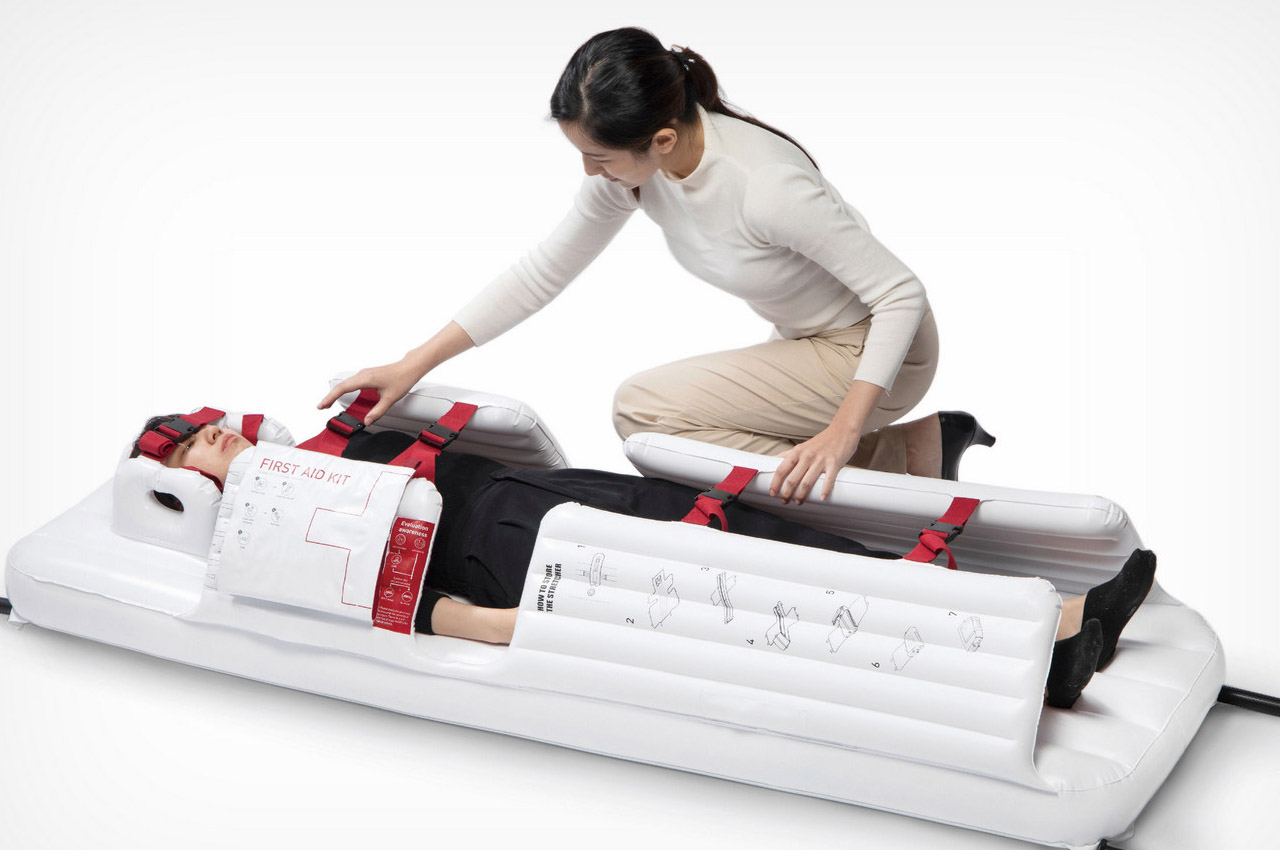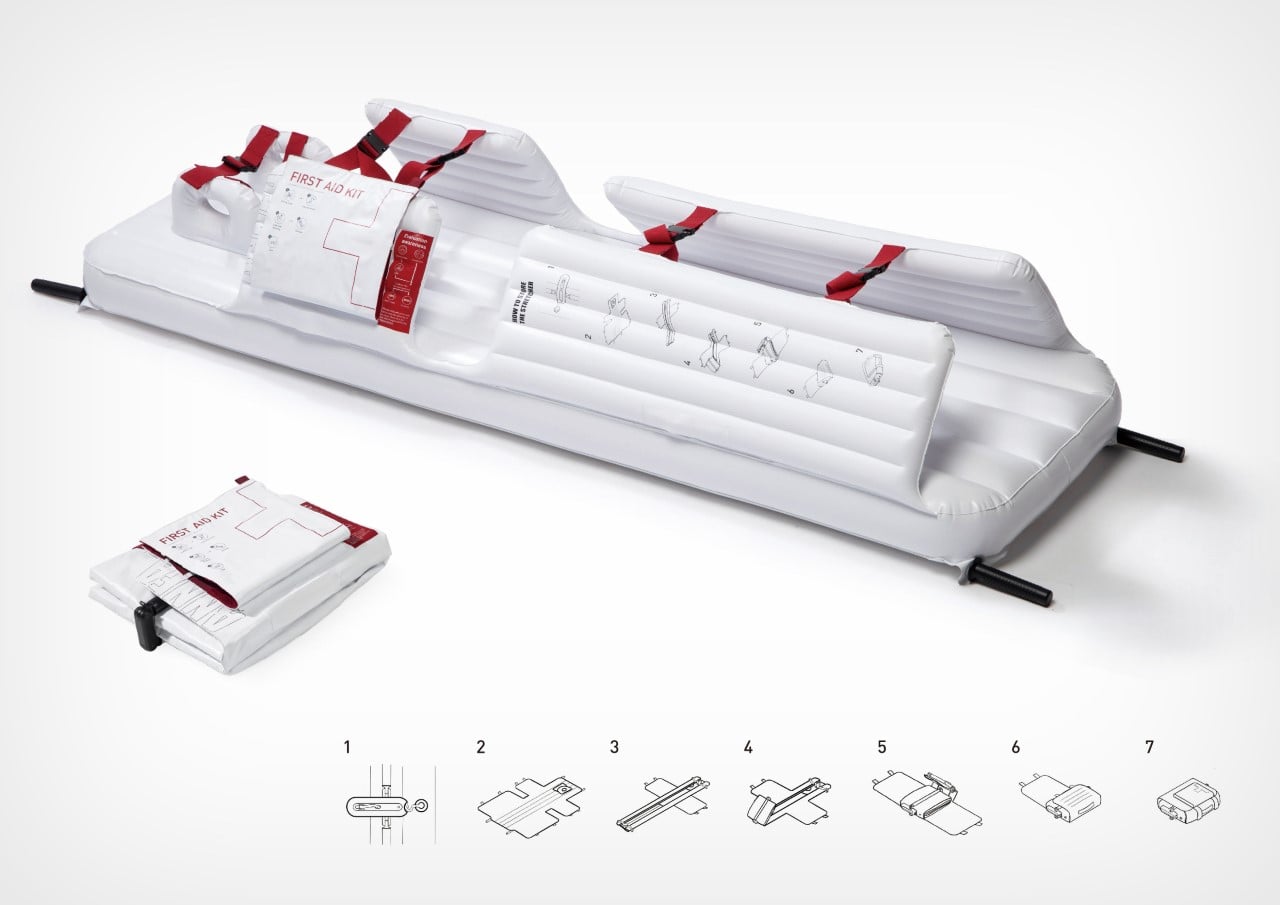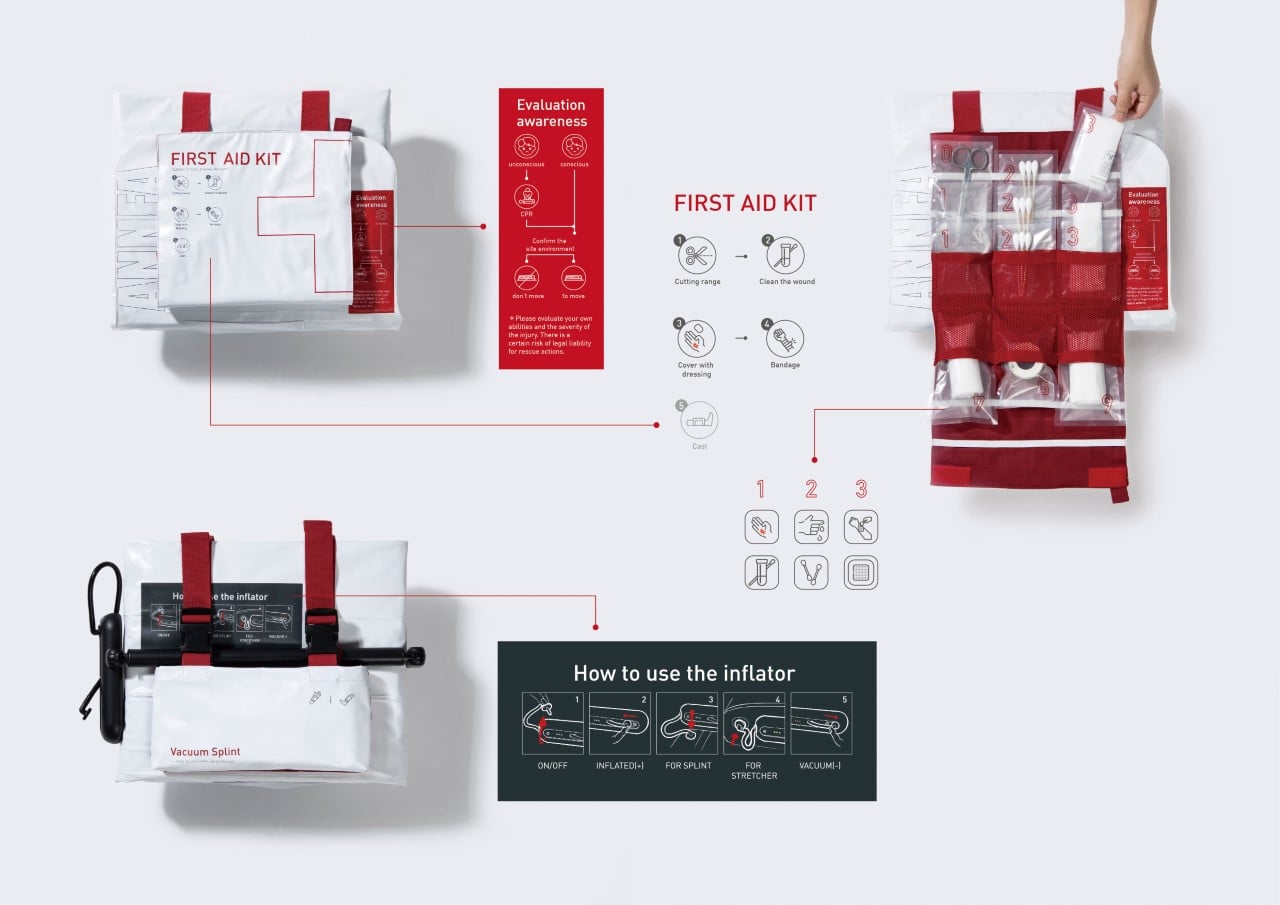
If there’s something that this pandemic has taught us it’s that health truly is wealth! We cannot take our health and well-being for granted, and a mindset of preparedness and precaution is extremely integral during such times. The medical industry has been making leaps and jumps in its innovations, to ensure such a brutal pandemic doesn’t occur again. Designers have been coming up with new and improved, life-saving medical designs that not only boost medical care but relieve some of the pressure from our tireless medical force. From an award-winning inflatable stretcher design to a Dyson award-winning injection accessory – these designs tackle a variety of problems in the health and medical field. They’re a boon to modern healthcare and a reminder that we cannot take our health for granted any longer!
1. The Inflatable Stretcher


Designed by Yu-Hsin Wu, a student at Taiwan’s Shih Chien University, the Inflatable Stretcher provides a much more secure way to transport patients from the location of the incident to a hospital. Almost like wrapping someone in bubble wrap, the Inflatable Stretcher cushions patients and even secures them in place with its unique design. Besides, it even comes with its own first-aid kit to help treat injuries that require immediate attention.
2. The Pinsoft
While its appearance could easily be mistaken for a fancy meat tenderizer, the James Dyson National Award-winning Pinsoft is an injection attachment that helps people deal with Trypanophobia or a fear of needles. Its terrifying appearance aside, the Pinsoft sits around ‘ an injection, and its multiple round-tipped prongs help stimulate and confuse your skin as the needle makes its way through. The gentle stimulation caused by the prongs distracts your brain since it can’t immediately tell the difference between the prongs touching your skin and the needle piercing your skin. By the time you realize what’s happened, you’re done with your shot!
3. Gelassette
The designer actually created a biodegradable cellulose-based rapid test back in 2020 but now he has come up with something based on this but with an improved and optimized design. This new prototype uses no plastic with the positive characteristics needed to be mimicked by gelatin. This material is already utilized in other medical technology and is a fully biodegradable material. With this material, you get 4 weeks of soil biodegradability and less than 3 hours of water dispersibility.
4. The CIONIC Neural Sleeve
The CIONIC Neural Sleeve is a wearable leg sleeve that can help people with mobility issues to walk and move more freely with the help of Artificial Intelligence and electrical stimulation. It’s basically bionic clothing that can help people walk by augmenting human movement. And unlike other devices that can seem robotic and uncomfortable, this is actually something that is comfortable to wear on a daily basis and is easy to put on and take off.
5. Uray
Most people undoubtedly find urine tests to be uncomfortable, even when done in the privacy of one’s home. While there is no need to draw blood, There is a level of embarrassment attached to the process, especially because of the process required. Unfortunately, that means that most people are at risk of developing kidney diseases that remain undetected until it’s too late. Although there’s no escaping the need to gather urine in a container for the test, Uray promises other ways to convince people to do it more regularly.
6. Re-Pill
This device called Re-Pill is created specifically for those that have TBI and may be suffering from cognitive issues like memory loss, attention deficit, and other problems connected to their disorder. Basically, it’s an analog clock and a pill dispenser so that the user and/or the caretaker will be reminded to take their medication throughout the day. The pill containers are placed during the time they’re supposed to be taken so that it’s easy to remember and to take them out.
7. The Alo
The Alo is an innovative accessory that acts as a healthcare assistant, ready to check a person’s O2 saturation, skin temperature, heart, and even GPS. It was designed to check and track the health and wellbeing of the clinic or hospital staff to ensure they stay healthy. This Alo smart device uses sensors and AI pattern recognition to check on the healthcare professional’s well-being. With the data and information gathered, the hospital management may act to reduce the workload of the nurses and doctors. If high pressure or high workload is detected, the person can assign other work or tasks to any available staff.
8. Cyberpunk inhaler concept
This inhaler concept shows clear signs of a cyberpunk future design style. The form itself is unconventional and the transparent parts of the shell reveal the inner workings of the medical device. At the same time, the worn-down metal surfaces of the canister suggest it has seen better days like it has traveled through rough roads to get to the person who needs its life-saving medicine. The small light at the end of the tunnel is that the design equally works for a utopian version of an inhaler. Idealized visions of the future often utilize white or bright motifs, tremendous use of plastic-like materials, and clean, unmarred surfaces. There is nothing that says “bright future” better than pure white materials.
9. The Dab
Literally the size of a quarter, the Dab is an unobtrusive Holter ECG/EKG that rests comfortably on your chest, constantly reading your heart’s movements. Designed to be minimal, non-invasive, and simple, the Dab tries to bridge the gap between medical appliances and wearables. Its tiny yet classy design sits on your chest via a gel patch, while the electrodes capture your heart activity. The Dab’s dry-electrodes allow it to be used and reused, unlike disposable electrodes that lead to large amounts of medical waste. They constantly measure one’s heart activity (requiring periodic charging via their wireless charging hub), and keep logs of accurate readings, quietly sitting on your chest while you absolutely forget that they’re even there in the first place!
10. Fanny
Designer Abel Szabo zooms in on the problem of wrist injuries to create a rehabilitation product that eases the user through the process of strengthening the muscle and tissues. Dubbed Fanny, this wrist rehabilitation medical accessory is specifically designed for people in the process of recovering from a nagging wrist or hand injury, or ones who keep suffering the same injury due to negligence in the past. Abel also seeks to devise a practical solution for people who either develop tennis elbow or are susceptible to developing it in the future due to the repetitive nature of their task.